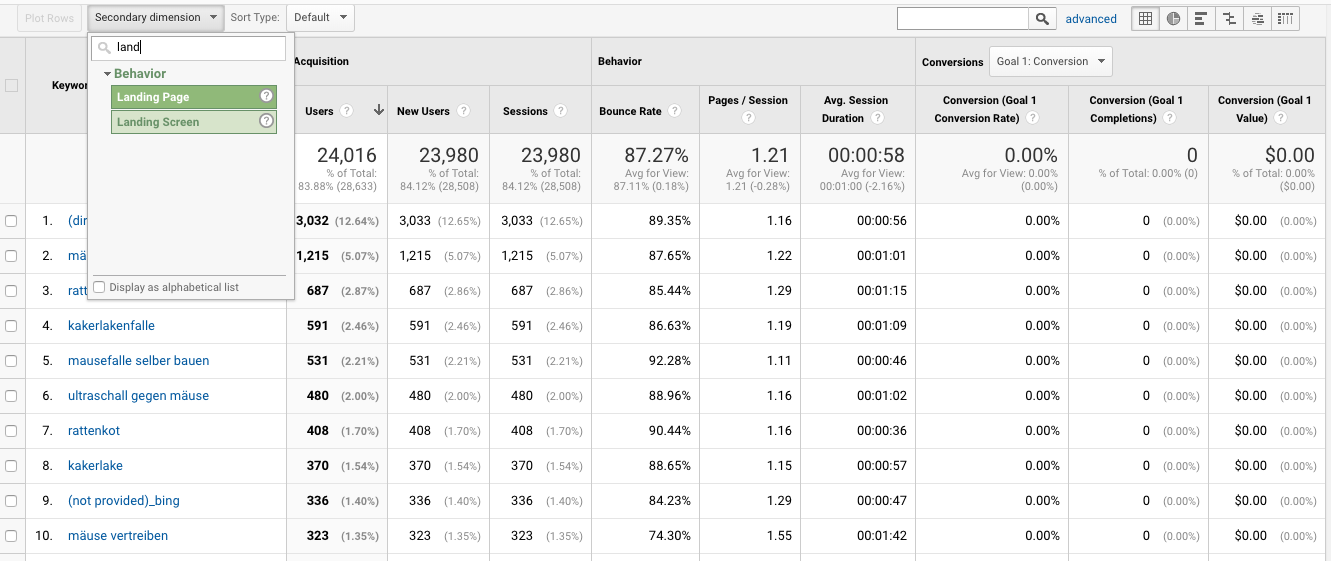Advanced Analytics Techniques: Leveraging Google Analytics Secondary Dimension
Advanced Analytics Techniques: Leveraging Google Analytics Secondary Dimension
Blog Article
Unlocking the Power of Second Dimension Analytics for Improved Information Insights and Decision-Making
In the realm of data analytics, main measurements frequently take the spotlight, yet truth depth of insights exists within the world of secondary dimensions. These extra information factors offer a nuanced point of view that can light up relationships and patterns not easily evident at initial glance. By utilizing the power of additional measurement analytics, companies can introduce hidden trends, uncover connections, and essence a lot more purposeful verdicts from their information. The possibility for improved decision-making through the utilization of these secondary measurements is large, guaranteeing a deeper understanding of complicated data sets and paving the method for more educated calculated options.
Relevance of Second Dimensions
Exploring the significance of second measurements in analytics reveals the covert layers of data understandings vital for notified decision-making in various domain names. Additional dimensions provide a much deeper understanding of main information by using extra context and perspectives. By including additional dimensions right into analytics, organizations can remove a lot more comprehensive and nuanced understandings from their datasets.
One secret importance of second measurements is their capacity to section and categorize key information, enabling an extra comprehensive evaluation of particular parts within a dataset. When looking at the information as a whole, this segmentation allows businesses to determine patterns, fads, and outliers that might not be evident. Second dimensions assist in revealing correlations and dependencies in between various variables, leading to even more accurate forecasting and anticipating modeling - secondary dimension.
In addition, secondary dimensions play a vital role in enhancing data visualization and reporting. By adding additional measurements to visualizations, such as graphes or graphs, analysts can produce a lot more insightful and helpful depictions of information, promoting far better interaction of findings to stakeholders. Overall, the integration of secondary dimensions in analytics is important in unlocking the full capacity of data and driving evidence-based decision-making.
Secret Benefits of Using Additional Dimensions
Utilizing second measurements in analytics provides organizations a critical advantage by augmenting the deepness and granularity of data understandings. By exploring data making use of secondary measurements such as time, place, device kind, or user demographics, companies can uncover patterns, fads, and connections that might otherwise continue to be concealed.
Furthermore, the application of second dimensions improves the context in which main information is analyzed. By leveraging secondary dimensions in analytics, organizations can harness the complete possibility of their information to drive far better decision-making and achieve their company goals.
Advanced Information Evaluation Strategies
A deep dive right into advanced data analysis techniques exposes advanced techniques for removing beneficial understandings from intricate datasets. One such strategy is artificial intelligence, where algorithms are employed to identify patterns within data, predict outcomes, and make data-driven decisions. This method permits the automation of analytical version structure, making it possible for the handling of huge quantities of information at a quicker speed than conventional techniques.
Another advanced technique is predictive analytics, which makes use of analytical formulas and artificial intelligence techniques to forecast find out here now future end results based upon historical data. By analyzing fads and patterns, services can expect client behavior, market fads, and possible dangers, encouraging them to make aggressive choices.
In addition, text mining and view analysis are valuable methods for drawing out understandings from disorganized information sources such as social media remarks, client reviews, and study actions. By evaluating text information, organizations can recognize client opinions, recognize emerging fads, and improve their service or products based on comments.
Enhancing Decision-Making Through Second Dimensions

Enhancing decision-making via secondary dimensions makes it possible for companies to make even more educated and targeted critical selections. By segmenting consumer information based on secondary dimensions like buying background or involvement degrees, firms can tailor their marketing techniques to certain target market sectors, leading to boosted conversion prices and consumer satisfaction. Additional dimensions can aid recognize relationships and partnerships in between various variables, allowing companies to make data-driven decisions that drive growth and profitability.
Implementing Secondary Measurement Analytics
When incorporating second dimensions in analytics, companies can unlock much deeper understandings that drive strategic decision-making and boost general efficiency. get more This involves understanding the certain questions the company seeks to address and the data factors required to address them.

Additionally, companies ought to utilize advanced analytics tools and modern technologies to improve the procedure of incorporating additional measurements. These tools can automate data handling, evaluation, and visualization, allowing companies to concentrate on interpreting insights instead of manual data control.
Verdict
To conclude, additional measurement analytics play an essential function in boosting information insights and decision-making processes. By using innovative information evaluation techniques and executing additional dimensions properly, organizations can unlock the power of their data to drive tactical service choices. The key benefits of utilizing additional measurements can not be overemphasized, as they give a much deeper understanding of information fads and connections. It is necessary for companies to utilize second measurement analytics to remain affordable in today's data-driven landscape.
In the realm of information analytics, key measurements commonly take the limelight, however the true deepness of understandings exists within the realm of secondary measurements.Using additional dimensions in analytics offers companies a calculated advantage by enhancing the deepness and granularity of information insights. By leveraging secondary measurements in analytics, organizations can harness the full possibility of their information to drive better decision-making and attain their service goals.
Implementing information validation processes and normal audits can assist maintain information quality and integrity.
By find using advanced information analysis strategies and carrying out secondary measurements efficiently, companies can unlock the power of their information to drive tactical business choices.
Report this page